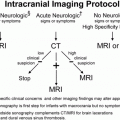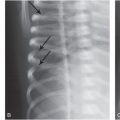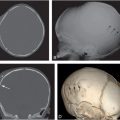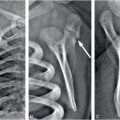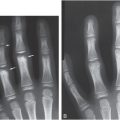html xmlns=”http://www.w3.org/1999/xhtml”>
Chapter 24 Psychosocial considerations
Introduction
The technical and analytic challenges of a radiologic evaluation of suspected child abuse may be compounded by a variety of psychosocial factors. Radiology staff who interact with children and their families during the imaging assessment of suspected abuse may react with distrust, anger, sadness, disgust, or disbelief. Families of a possible victim of child maltreatment may be angry or defensive, and children who have a history of trauma may be more anxious or reactive than other patients, complicating the assessment by the radiology staff. Additionally, many adults working in the healthcare field have a history of personal experience with abuse or neglect in their own family or with a neighbor or friend (1), exacerbating the risk of a negative experience and compromised imaging assessment. This chapter is intended to provide a greater understanding of the psychosocial issues at work in cases of suspected abuse and how members of the diagnostic imaging team should approach the patient, as well as the families/guardians in cases of possible child abuse. As they seek to acquire and interpret imaging studies at a high level of proficiency, imaging professionals must carry out their responsibilities in a manner that will minimize the risk of secondary trauma arising from difficult patient or family interactions.
Child Abuse Pediatrics and the Child Protection Team
The field of Child Abuse Pediatrics became a board-certified pediatric specialty in 2009, requiring three years of fellowship training. Child Abuse Pediatricians (CAPs) are trained in an understanding of injuries which may occur in various organs, including the brain, digestive, renal, ocular, and skeletal systems. These specialists are also educated in the many radiologic approaches used to search for and characterize potentially abusive injuries, and radiologist collaboration with these experts is often critical in identifying subtle findings that may significantly impact cases as they progress through the legal system.
Guidelines have been established regarding the role of hospital-based Child Protection Programs by The Children’s Hospital Organization, and the majority of tertiary pediatric hospitals have some form of Child Protection Team (CPT) in place (2). Hospital-based CPTs provide multidisciplinary consultation in both inpatient and outpatient settings, with expert medical clinicians, social workers, and sometimes psychologists who together assist staff in the evaluation and management of child maltreatment. Unfortunately, the current reality is such that many radiologists and radiologic technologists still find themselves in a system without these supports, and even when the guidance of a CPT is available, radiology staff may choose not to seek their assistance.
Family and child concerns
It can be helpful to staff to develop an understanding of the challenges faced by children and parents who are being evaluated for possible abuse, so that technologists and radiologists can react to difficult situations appropriately.
Child characteristics
Any child can be a victim of maltreatment, with perpetrators ranging from parents and guardians to individuals entrusted with a child’s care, such as day care workers, extended family, and babysitters, or less typically, complete strangers. Sadly, children are often dependent for sustenance and shelter upon the very individuals who threaten their survival. Certain child characteristics are associated with increased risk of maltreatment, although each individual child victim has a unique set of risk factors.
Child risk factors for maltreatment may vary by type of abuse. The risk of physical abuse is higher in children who are younger and, thus, dependent on caregivers; children who are nonverbal; and children who are isolated from nurturing and responsible adults. In addition, children who cause higher levels of stress or frustration to caretakers are more likely to experience aggression and violence in reaction. Children with disabilities, in particular, who can require a more intensive level of care from parents, are usually thought to be at significantly higher risk for abuse than other children (see Chapter 23) (3–5). Children who have a difficult temperament, who are emotionally and/or behaviorally dysregulated, and/or those with lower verbal skills are also at higher risk of maltreatment (6). Younger, more dependent children are vulnerable to serious and permanent disability or death from the severest forms of abuse.
Parent–child bonds are often maladaptive in children who have been maltreated. Optimally, parents and children form a secure attachment during a child’s infancy, and this attachment is associated with a range of positive outcomes, including the ability to self-regulate, attend and learn, and form positive relationships throughout the life span. Children who have experienced maltreatment at the hands of parents and guardians, instead, often develop insecure and sometimes disorganized attachment bonds. Disorganized attachments, in particular, are characterized by a haphazard set of comfort-seeking behaviors with caregivers. As Stronach et al. note, “Children with disorganized attachments often become fearful, hostile, affectively dysregulated, or disengaged in the caregiver’s presence” (7).
Unfortunately such attachments, and the experience of early and chronic stress and anxiety, are associated with an onslaught of other risks for maltreated children if they are not identified and assisted early in life. These include difficulties in the most important areas of function, such as social skills, school success, executive functions, and emotion and somatic regulation. Given these challenges, children who have been maltreated will often encounter continued behavioral, emotional, interpersonal, and academic difficulties when they emerge into the larger community, and as they age into school readiness, if their histories of stress and trauma are not understood and accounted for (8).
Much has been written of the threat of poor long-term outcomes for maltreated individuals, perhaps most notably the set of articles related to adverse childhood experiences by Anda, Felitti, and others (9, 10), which catalogued some of the lifelong health effects (including greater morbidity and premature mortality) experienced by children who had encountered one or multiple significant adversities such as physical and sexual abuse. A variety of significant and often long-lasting mental health sequelae have been documented as well (11, 12). These data poignantly illustrate the need to intervene early and effectively to circumvent lifelong strife for maltreated children, as well as generational abuse, which can plague a family.
In light of the above, children and adolescents may present in a range of ways to a radiology department for concerns of abuse. Given that only a subset of these children are actually victims of abuse, when a child’s behavior is challenging and difficult, the staff should not assume that his or her presentation is related to maltreatment. In addition, family interactions can sometimes be disturbing, even in the absence of family-related abuse. Nevertheless, it is helpful to realize that some children may act overly frightened, and/or may exhibit signs of trauma (extreme anxiety, dissociation, hostility, and/or atypical compliance) because they live in an unusually punitive environment.
Parent and family characteristics
Prediction of child maltreatment and violence is very difficult, and sometimes the characteristics of families who have abused children can be surprising, with the variables contributing to abuse difficult to discern or detect. It can be especially hard to recognize abuse in families from higher socioeconomic backgrounds. An array of parent and family factors are associated with maltreatment risk. Aside from maladaptive parent–child attachment patterns, child maltreatment is associated with families in which other types of interpersonal violence prevail, including intimate partner violence (IPV). Given that all forms of family violence suggest a lack of sensitivity or empathy for another human being, it is not unexpected that abuse of children and romantic partners tend to co-occur. In addition, sometimes perpetrators lack information about child development and children’s developmental needs, and/or alternative and positive parenting practices. Higher risk of maltreatment is associated with less education, younger maternal age, larger family size, and a single parent and step/cohabiting homes versus homes with two biologic or adoptive parents (6, 13, 14).
High levels of stress and poverty may at times compound family problems. In addition, substance abuse is associated with all forms of maltreatment, setting the stage for both child neglect and impulsive, abusive behaviors. Sometimes other significant parental psychopathology can also impact coping and judgment, increasing the danger for children. Acute stressors can also lower the threshold for abuse, such as divorce, job loss and concurrent financial pressures, in parents who otherwise may have been able to maintain appropriate behavioral restraint with their children. Importantly, social isolation is associated with all forms of family violence for many reasons; it increases the likelihood that abuse will occur without detection, it makes it more difficult for a victim to recruit help, and it adds to family stress. A parent who is unable to obtain the necessary respite from child care is more likely to be at risk of abusing a child. Not surprisingly, mothers appear to be the ones most likely to perpetrate physical abuse upon their children (14), given that they are often the primary and sole caregiver of children in the context of high stress, multiple responsibilities, and poverty. Extended family, friends, and other supports can create a web of prevention to aid at-risk children and families (15).
Parents of child abuse victims, both perpetrators and nonoffending parents, often have been victims of violence themselves, which may serve both to normalize a culture of violence and victimization, and model violence and rage as acceptable within the framework of interpersonal relationships. Many have untreated trauma histories. Sometimes low self-esteem can create a need for control and power over another, whether it be a romantic partner or a young child. Nonperpetrating parents may themselves be concurrent abuse victims through IPV, living in extreme isolation imposed by the perpetrator, and unsure of how to best safeguard a child (6, 14). Other times, nonperpetrating parents are distant, negligent, and in denial about the abuse. Nonperpetrating parents may be concerned about finances and fear that reporting an abuser may catapult a family into homelessness and dire poverty, especially when the perpetrator is supporting the family financially. They may have concerns about needing to separate children from gratifying aspects of their lives, including schools, friends, and hobbies, if uncovering the abuse would signify a significant change in lifestyle. Maternal illness, maternal sociopathy, poor marital quality, and low maternal or paternal warmth are all factors that have been associated with increased risk of maltreatment (6).
Cultural and religious issues
Each family presenting with suspected or confirmed child maltreatment encompasses a unique set of cultural norms, beliefs, values, and set of life circumstances, which sometimes need to be understood to work effectively on behalf of the child and family, and which may impact the family’s interactions with professionals and help-seeking services.
Families may not speak English (or other language in customary use) well or at all, and can be intimidated seeking professional guidance through the typical routes. Immigrants may be naive as to the laws and norms of their adopted society. Understanding what constitutes appropriate and acceptable caretaking has varied historically and geographically, and therefore caretakers may at times be unaware that the behaviors they are engaging in are considered maltreatment in their current setting. In addition, undocumented parents may be reluctant to approach professionals for help, believing that they may be deported to even more dangerous circumstances, or separated from their children and unable to help them at all.
Certain parents, especially minority families, may fear institutional bias against them, and be wary and hesitant in a hospital setting, even when they are supportive and nonperpetrating caretakers. They may fear blame, harsh reactions, biased assumptions about their care and abilities, and even removal of children based on arbitrary issues or unfounded assumptions. Others are humiliated at the idea of being involved with child protection, angry, and offended, while some families prioritize privacy and experience any attention given by professionals into their family functioning as an unwarranted intrusion. Without understanding these issues, a family’s guarded behavior can be viewed as “covering up,” while other variables might instead be governing their presentation.
Religious issues can impact comfort levels with medical intervention as well, and some families may engage in practices, such as cupping or coining, which may be interpreted as abusive, yet are not harmful and emanate from love and nurturance. Even when medical practitioners are knowledgeable and expert in distinguishing true abuse from mimicking conditions, these professionals may condescend to families, consider their practices naive and ignorant, and thus inadvertently impact a family’s trust and comfort. Ann Fadiman published a groundbreaking exploration of these issues in her portrayal of the communication divide between a Hmong family and medical practitioners (16). More research is needed related to cultural factors and how they impact families suspected of abuse, and/or those being served by state child welfare systems. Korbin, Raman, and Hodes, and Terao et al. provide interesting explorations of issues to consider relevant to child abuse and culture, and practitioner cultural competence (17–19).
Specific challenges faced by the Radiology Team
It can be difficult to evaluate possible child maltreatment in the setting of a busy radiology department. Many of the imaging techniques used to evaluate abuse may be time consuming both to conduct as well as to interpret. In addition, radiologists, technologists, and clerical staff can be upset or anxious about having possibly abusive caretakers in the waiting room or radiology suite. The following issues are important to consider in any program which may evaluate children for child maltreatment.
Parent/guardian issues
Often family members who accompany the patient may be unaware of the concerns of abuse. Care should be taken in communicating with caregivers, as there may be a risk of flight or conflict between parents. This can be even more sensitive in the set of families referred for suspected abuse, as the presence of IPV may impact a couple’s presentation and create anxiety in a nonperpetrating parent who may fear retribution if he or she provides information relevant to the abuse.
If there appears to be a risk of flight or escalating volatile behaviors, it may be helpful to have hospital social workers and/or security aware or present. In most cases, it is best to defer feedback about the findings of a diagnostic procedure to the CAP or other ordering physician. Staff should treat all family members with respect, and avoid reaching judgment about the guilt or innocence of a particular caregiver. If the caregiver has questions about the indication for the study or the risks of the procedure, the ordering provider should be involved in the discussion. During such exchanges, sensitivity should be shown to the family’s culture and background, with interpreters available as necessary.
Staff issues
It is not uncommon for staff to react strongly to cases of abuse or neglect. Often, staff behavior is impacted by a history of dealing with abuse (whether personal or professional). To add to this stress, families sometimes take their anxieties out on the radiologic technologist. An anxious parent/guardian may speak to the child as if the technologist was not present. Any inappropriate or concerning behavior should be documented and relayed to the radiologist and the CAP or other physician managing the case. Again, should behavior escalate, social work and security should be involved. If staff find that a particular case is difficult or triggering for them, the work atmosphere should permit them to step away from the case.
Given that radiologists may have little or no training about the social issues and dynamics of child maltreatment, it may be particularly challenging to interact with parents/guardians who fall into one or a number of the following categories: (1) correctly suspected of abuse, and anticipating some of the ramifications of being identified; (2) incorrectly suspected of maltreatment, concerned for their child, and worried about the possibility that another individual perpetrated abuse; (3) devastated because of significant, perhaps irreparable physiologic damage perpetrated on their child, whether at their own hands or the hands of another; (4) devastated by a growing realization that a marital and/or romantic partner, or another trusted caregiver within or outside the family, perpetrated a deep betrayal by inflicting serious abuse on a child; (5) angry that abuse is suspected and in denial that abuse has occurred, either rightly or wrongly.
There may be times when a radiologist needs further clarification from an accompanying guardian or family member about an injury or medical problem. It is important to ask only questions relevant to the radiologic study, and not to undertake a line of inquiry, which might resemble or impact a legal investigation. Additionally, caution should be exercised in questioning a child or adolescent about the specific reason for the imaging study; these questions are best addressed by individuals trained in child interviewing and complex questioning techniques, as it can be traumatic and confusing for a child to be interviewed by multiple individuals. A child who is questioned inappropriately may be put at greater risk if the legal system believes that his or her memory and/or statements have become contaminated by confusing or coercive interactions (20–23). Any statements or other documents offered by family/guardians or the at-risk child to radiology staff which may have a bearing on the issue of alleged abuse should be well documented and immediately communicated to the responsible physician/CPT member. Radiologists and technologists should be knowledgeable about how to access and consult the CPT at their institution or with child abuse specialists in their region.
The often challenging and complex interactions with children and families during situations unfolding in the healthcare facility environment require sensitivity, composure, and the ability to de-escalate tensions – providing a semblance of calm for parents and children in an acute crisis with uncertain outcome. The radiologic examination may occur before abuse is suspected or during a series of imaging procedures performed to clarify concerns of abuse. During this process any number of factors may impact on a family’s behavior and attitudes, which are usually not shared with the imaging professional. Radiologists and technologists should receive training in the background and dynamics of abuse, warning signs of danger, how to optimize safety, and when to notify security. They should be familiar with best practices for interacting with families and children during this often stressful interval, what observed interactions and verbal interchanges to document, and to whom to convey these observations and concerns. Training of imaging professionals in the relevant aspects of this complex disorder should be strongly encouraged.
Conclusion: best practice guidelines
- Cases of possible abuse or neglect should be handled with respect and sensitivity toward both parents/guardians and children.
- Radiology staff should be informed with regard to those issues which influence parental and child behavior in cases of suspected child maltreatment.
- Ongoing support should be available to all staff in order to address possible secondary trauma from involvement in difficult cases of child abuse.
- Information about each case should be obtained from the care provider/ordering physician rather than through an interview of the parent/guardian in the waiting room or radiology suite; children should not be interviewed by staff about possible abuse.
- The finding of a potentially abusive injury, whether previously suspected or encountered incidentally during the imaging assessment, should be conveyed immediately by the radiologist to the responsible physician/CPT member to facilitate appropriate steps to protect the patient and others at risk from abuse.
- Safety of staff, children, and nonoffending caretakers is paramount; it is important to ensure that any discussions about possible abuse are held in a secure setting, such as an examining room in the emergency department or clinic, and not the waiting area of a radiology department.
- Training programs should be developed, implemented, and evaluated, in order to provide optimal support and skill development for radiology staff.
- Empirical research should examine the patterns of child and family presentation of child protection cases in the radiology department, patterns of interaction with technologists and other staff, warning signs of threat (i.e., when security might be needed), and the challenges perceived by radiology staff.
- Radiology departments should consider integrating personnel with formal psychosocial training in domestic violence, focused on child maltreatment, into the imaging team to enhance support for staff and facilitate optimal interactions with at-risk families and children.
References
Stay updated, free articles. Join our Telegram channel

Full access? Get Clinical Tree


